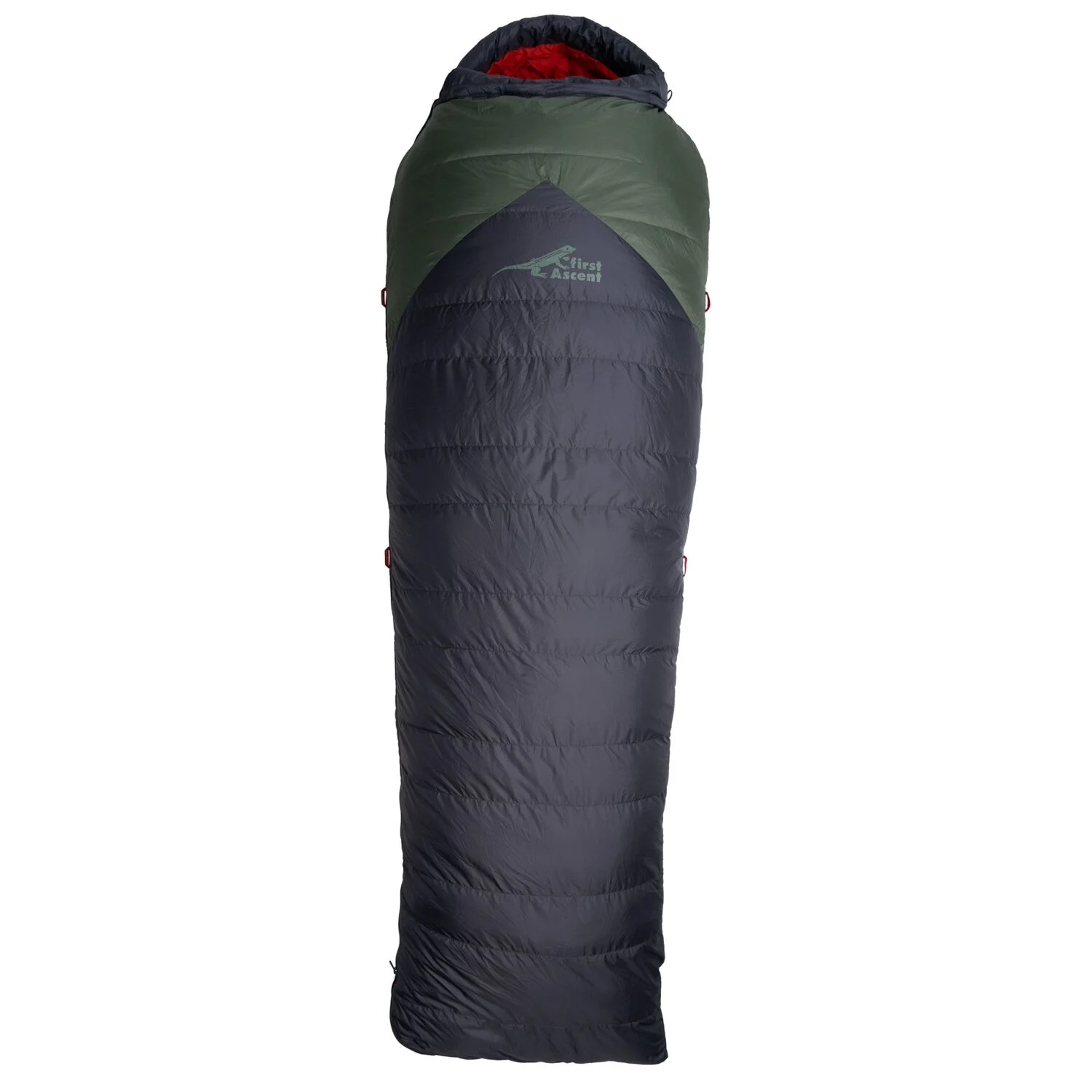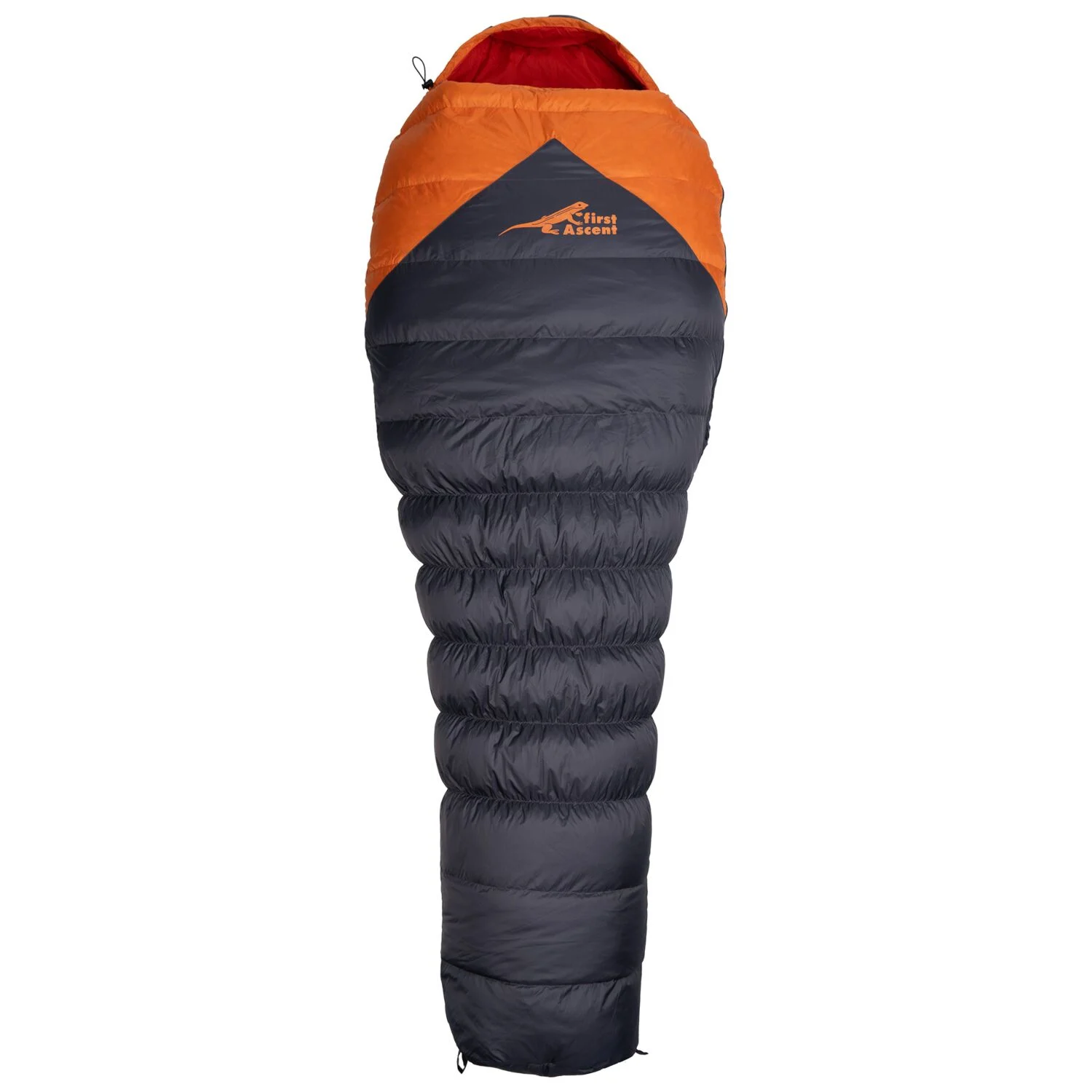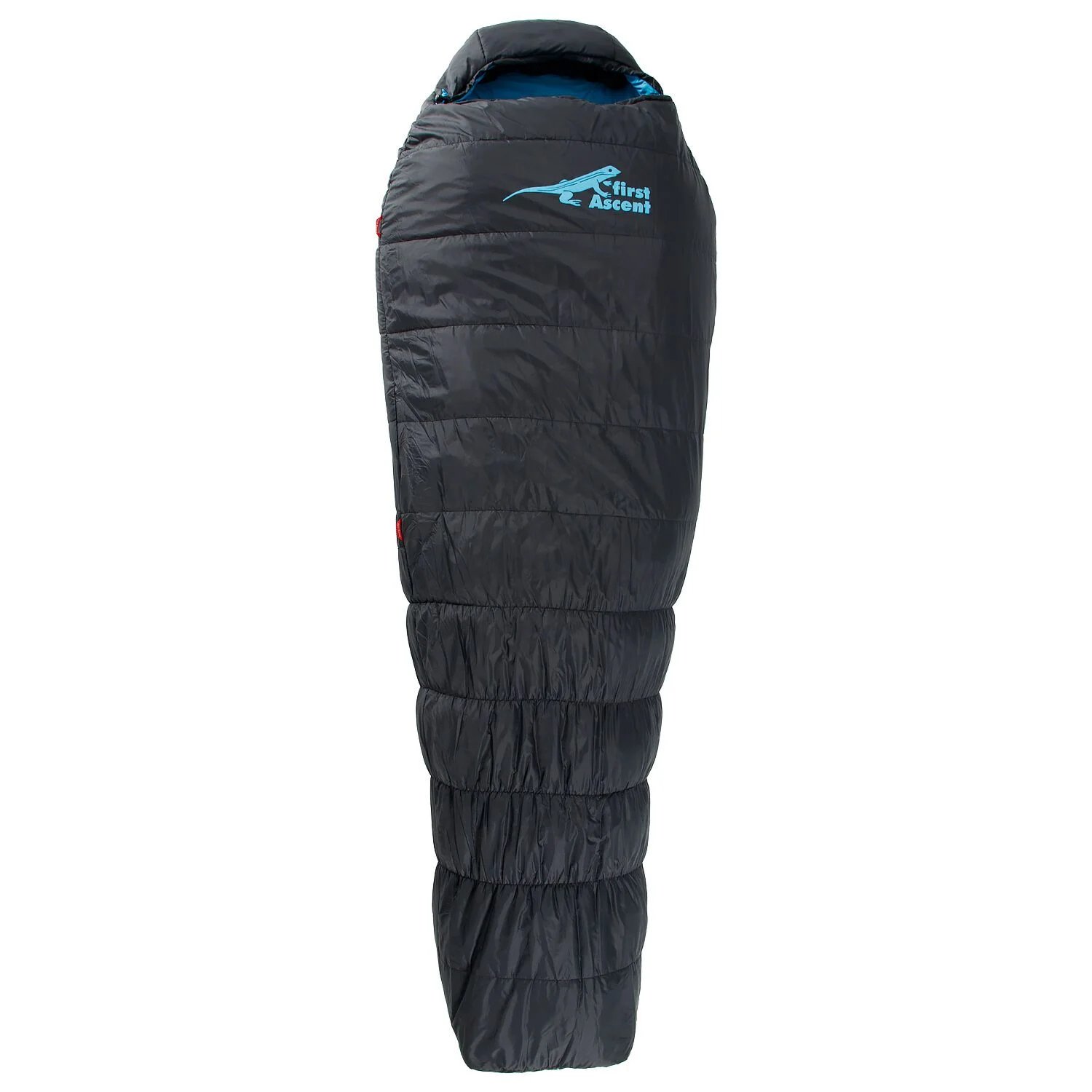A good night’s sleep can make all the difference on any outdoor adventure, and it all starts with the right sleeping system. At the core of that system is your sleeping bag. In this guide, we unpack First Ascent’s sleeping bag range and the key factors to consider, from down vs. synthetic insulation to seasonal suitability.
Top things to consider when choosing a sleeping bag
- Temperature ratings
- Down vs. Synthetic
- Weight and dimensions
- Shape and Fit
- Complete sleeping system
Temperature Rating
Sleeping bag ratings such as T-Comfort, T-Limit, and T-Extreme are based on the ISO 23537 standards, ensuring consistent temperature ratings across brands. However, lab-tested temperature ratings and real-world comfort may differ due to factors that a lab test cannot accurately simulate.
Here is what the different ratings mean

T-Comfort: The lower limit at which an average cold sleeper in a relaxed position, sleeping on their back, is in thermal equilibrium and at the threshold of feeling cold. This is the most practical rating for most users, especially those who tend to sleep cold.
T-Limit: The lower limit at which an average warm sleeper in a curled-up body posture is in thermal equilibrium and at the threshold of feeling cold. This is a more performance-oriented rating, used for those who are experienced or "warm sleepers" and willing to push limits.
T-Extreme: The lower limit at which an average person can maintain warmth for up to six hours without the risk of hypothermia, but with a high risk of discomfort. This is a survival rating and should only be applied in extreme conditions.
Down vs. Synthetic
Down Insulation
Down insulation offers an excellent warmth-to-weight ratio, making it a top choice when packability and low weight are priorities. Its natural loft allows it to compress easily. However, not all down is equal; higher quality or "cleaner" down typically delivers better performance.
Down sleeping bags are best suited to cold, dry conditions, as down loses its insulating properties when wet.
Our Top Down Insulation Picks
Winter: Ice Breaker Down Sleeping Bag
The Ice Breaker Down sleeping bag is the perfect all-rounder for colder overnight conditions. Comfort rated at -3°C and weighing only 1.6kg, this bag, combined with a good sleeping system, is ideal for most cold South African conditions.
Summer: Amplify Down Light Sleeping Bag
The Amplify Down Light sleeping bag is super light and compact, weighing only 595 grams. Comfort rated at 13°C and transition rated at 9°C, this sleeping bag will keep you warm, but not too hot, on summer evenings.
Synthetic Insulation
Synthetic insulation was developed as an alternative to natural down. While synthetic insulation typically offers less packability and is slightly heavier than down, it is often more affordable. One of its key advantages is that it retains some insulating properties even when wet, making it a more reliable option in damp or humid conditions.
Our Top Synthetic Insulation Picks
Summer: Amplify 900 Synthetic Sleeping Bag
The Amplify 900 Synthetic Sleeping Bag is ideal for summer or spring backpacking and hiking. It features new Amplify (expand) technology in the knee and hip area to minimize heat loss. Comfort rated at 7°C and weighing 0.97 kg, it offers a great balance between weight and warmth.
Shape and Fit
Sleeping bags generally come in three basic shapes: rectangular, semi-rectangular, and mummy.
- Mummy-shaped bags: Offer a snug fit, which improves warmth and reduces weight by minimizing excess fabric. With this shape, you tend to roll with the bag rather than inside it.
- Rectangular bags: Provide more room to move but sacrifice some thermal efficiency due to cold spots and heat loss, especially around the shoulders and near the feet.
- Semi-rectangular (or modified mummy): This shape strikes a balance, offering a comfortable compromise between warmth and freedom of movement.
Complete Sleeping System
Your sleeping bag is just one part of your sleep setup. Because your body compresses the insulation beneath you, reducing its effectiveness, an insulated sleeping mat is essential for warmth and overall comfort. A sleeping bag liner adds extra warmth, protects the bag’s interior, and is easier to clean—helping extend the life of your sleeping bag.
Learn more about how to build a complete sleeping system here.
Find the perfect tent to complement your sleeping system here.



